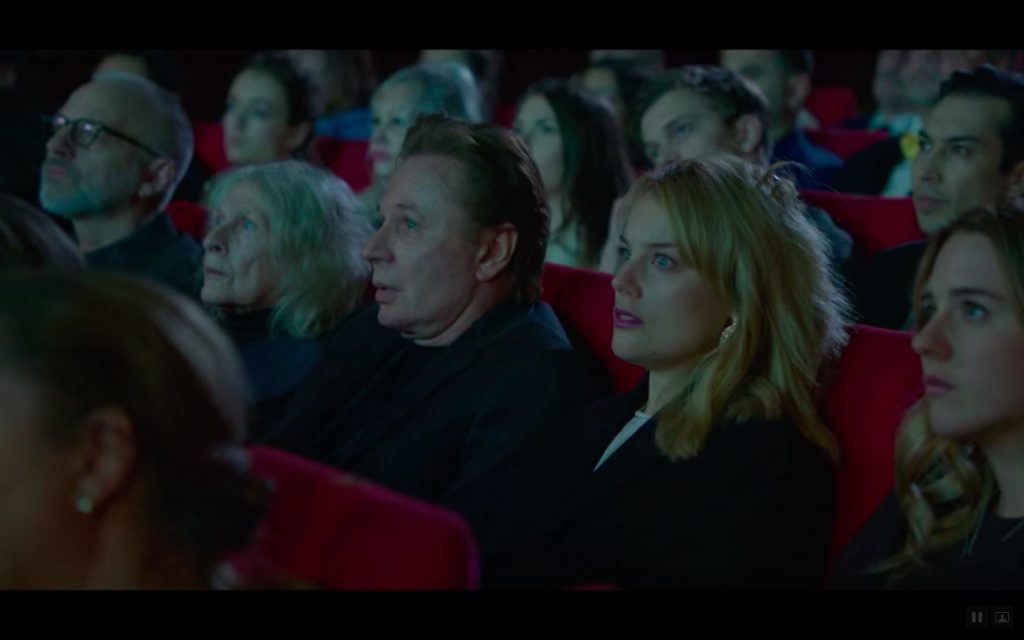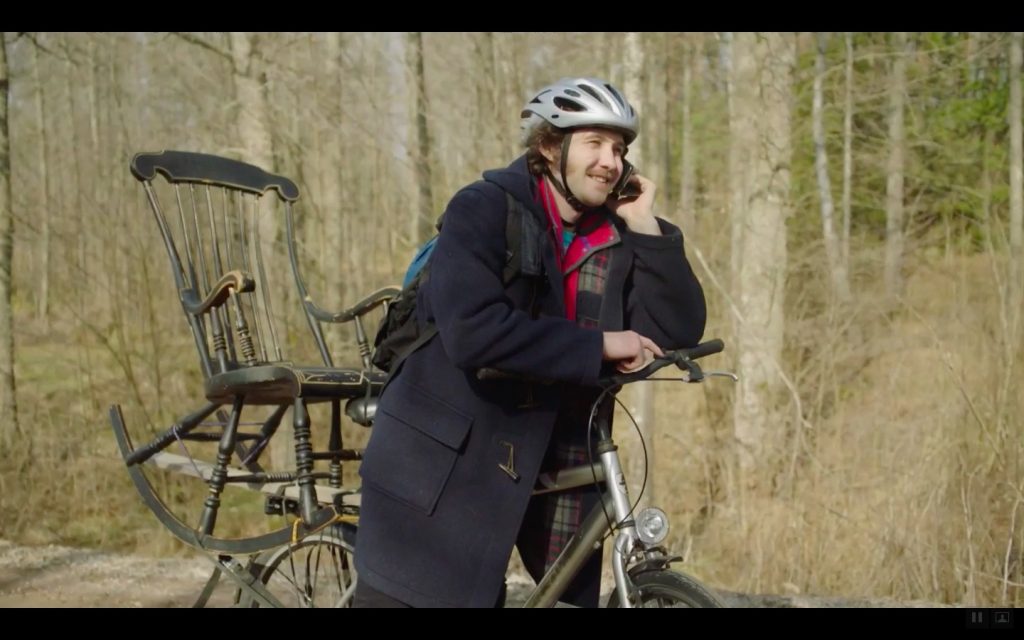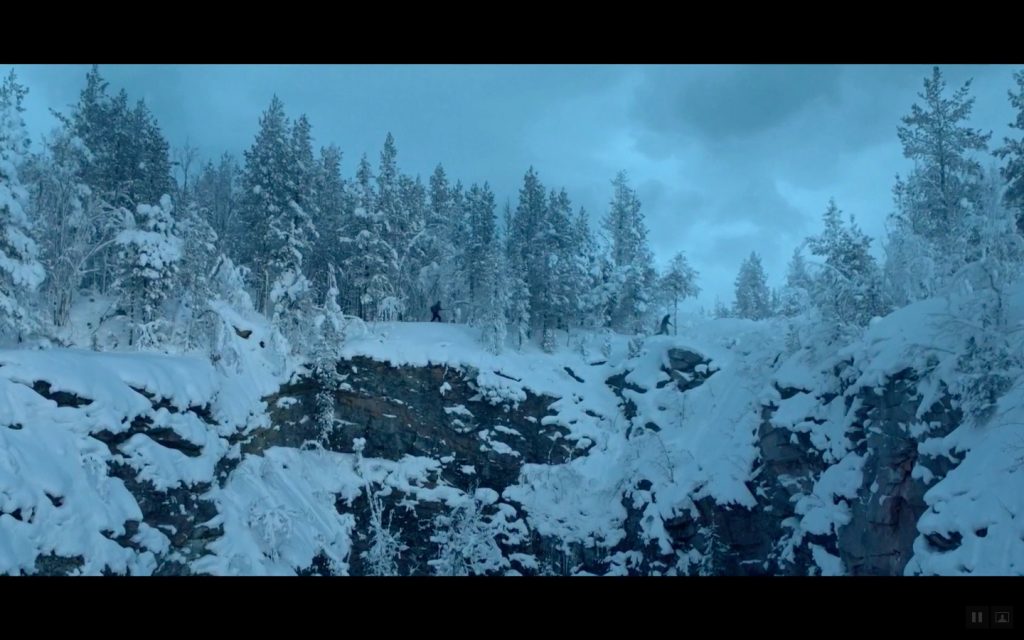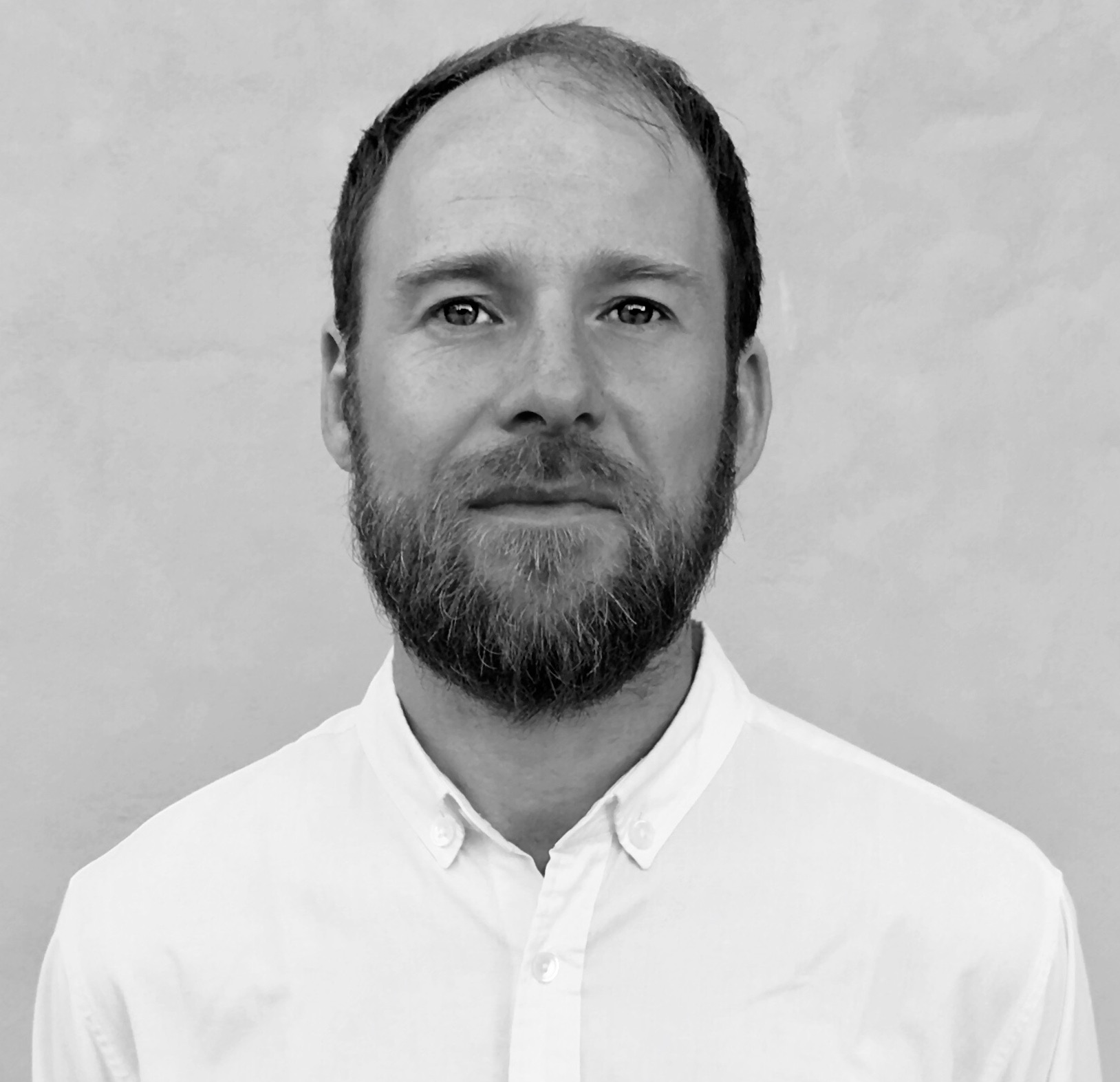By Joel Frykholm

In a forthcoming article in New Review of Film and Television Studies I explore the Swedish infatuation with American “quality” TV and how this relates to the breakthrough of streaming TV. When Netflix and HBO Nordic were launched in Sweden in late 2012, binge-viewing serial TV was already a firmly established and widespread cultural practice in Sweden, so it made sense that both companies promoted originally produced “quality” series as a main attraction for potential subscribers. Local streaming services such as Viaplay and C More responded by turning out a slew of series of their own, many apparently made to capitalize on the “Nordic Noir” brand. In the subsequent phase, both Netflix and HBO Nordic/Europe started bankrolling locally produced Swedish series, along the lines of a “glocalization” strategy that we have seen in other countries, too. It was around this time the phrase “streaming wars” began to appear with some frequency in the cultural discourse.
Netflix’s and HBO’s “Swedish” series—two each to date—deserve more attention than I give them in the aforementioned article. They only represent a tiny sliver of the vast curated content libraries that we have access to via these two “portals” (Lotz 2017), but may still reveal something about the “identity, vision, and strategy” (Lotz 2017: 8) that define Netflix and HBO. In particular, they are interesting manifestations of the globalization of television at work. Their very existence seems to support the idea that at least some facets of the process are best understood in terms of integration and assimilation into national media systems rather than as imperialistic homogenization (Jenner 2018: 212; see also Lobato 2019: 109–114). But how exactly are “glocalized” series designed to cater to national cultures and taste formations? And how is the catering to local audiences combined with a more transnational appeal? I’ll spend the rest of this blog post offering some brief and highly preliminary remarks based on the Swedish examples.
The first one to be released was Quicksand (Störst av allt; FLX for Netflix, 2019). This six-episode mini-series is based on a 2016 novel that enjoyed both critical acclaim and public success. The author, Maria Persson Giolito, happens to be the daughter of one of Sweden’s most beloved public figures—Leif GW Persson, a professor of criminology, a best-selling author of crime fiction himself, and a ubiquitous presence in Swedish media. Perhaps this facilitated the promotion of the novel as well as the Netflix adaptation in a local context. On the other hand, Giolito’s novel sold to thirty countries, which indicates a prepacked exportability that might also have been an attractive feature from Netflix’s perspective.
Quicksand is a combination of courtroom thriller and teen drama. The series opens with a classroom shooting at a high school in an upper-class suburb of Stockholm and the taking into custody of Maja, the just-turned-eighteen suspected perpetrator. The rest of the series unpacks the events that led up to the shooting and details the ensuing trial. A certain emphasis on divisions of class, gender, and ethnicity informs the narrative, and adds a tinge of social criticism that aligns the show with the tradition of Swedish crime fiction established by Per Sjöwall and Maj Wahlöö in their ten Martin Beck novels (1965–1975). It would also be possible to frame stylistic elements as well as promotional strategies with reference to the concept of “Nordic Noir” (see Hansen 2020). But the teen appeal strikes me as more relevant in terms of both marketing, narration, and modes of address. Although courtrooms and correctional facilities provide important settings, the show mostly moves through the world of a small group of teenagers. Crucially, Maja serves as the primary point of focalization, and her passionate (sometimes drug-addled and abusive) high-school romance with Sebastian takes narrative precedence. Sebastian is played by Felix Sandman, a teenage heartthrob and former member of the Swedish boy band FO&O, now a successful solo recording artist. This casting choice only makes it even more abundantly clear that FLX and Netflix must have had the teen audience primarily in mind when they conceived of the series. A young demographic is already overrepresented among Swedish Netflix users (Internetstiftelsen 2019), so hitting it home with the core audience was apparently prioritized over attracting new demographics. It seems to have worked—an analysis carried out by the Swedish Film Institute (Svenska Filminstitutet 2020) indicates viewing figures that are comparable to the most successful Swedish feature films, and that young viewers (15–29) were much more likely to have seen Quicksand than older viewers.

Netflix’s other Swedish series, Love and Anarchy (Kärlek och anarki; 2020), was also produced by FLX, but seemingly with a more “mature” audience in mind. The show was scripted and directed by Lisa Langseth, a Swedish stage and film director with three feature films to her name, all starring Alicia Vikander (now a movie star of global magnitude, Oscar winner and all). It combines workplace comedy and family drama in familiar and broadly relatable ways, but the focus on Stockholm’s culture and media elite circles adds local flavor—the setting is immediately recognizable for local denizens (however exaggerated for satiric purposes).
Sofie, the show’s protagonist, is a freelancing management consultant who starts working for the fictive book publishing company Lund & Lagerstedt. Sofie is supposed to develop a digital strategy and usher the company into a new media landscape. At L&L, Sofie meets Max, an IT technician 15-or-so years her junior. There is an attraction and a series of increasingly daring challenges that provide for much of the show’s momentum, comedic jouissance, and relatively critical interrogation of the nuclear family and urban, middle-class existence writ large.
Love and Anarchy’s dynamism also stems from its staging of a conflict between cultural and financial capital. It’s art against money, at least for characters such as Friedrich Jägerstedt, L&L’s male, white, middle-aged resident custodian of high-art values. In some contrast to Friedrich, who suffers a series of meltdowns and crackups, the show itself retains the capacity to function properly in spite of having to keep several seemingly contradictory thoughts in view at the same time. There is some poking of fun at the crass commercialism and cultural infantilism of digi-capitalism, but also the playing of Friedrich as well as Sofie’s old-school Marxist-Leninist dad for jokes that cut the opposite way. The show’s cleverly self-reflexive mode is noteworthy in this context. A major plotline in Love and Anarchy revolves around that acquisition of L&L by a global streaming service called StreamUS, for the purpose of getting their hands on valuable literary IP that can be turned into screen entertainment. Predictably, Friedrich is vehemently opposed. His colleague Deniz (quadruple-coded as Friedrich’s opposite—young, female, lesbian, and non-white) tries to set him straight: StreamUS values breadth, and precisely for this reason also narrow content. In another episode, Sofie adds: StreamUS “wants exactly what you [Friedrich] have: cultural cred. Which they have now purchased.” Already before the full acquisition takes place, we learn that StreamUS’ adaptation of Tåget, an award-winning, highly “serious” novel published by L&L, represents their first investment in “Nordic Content.” The novel is mangled beyond recognition in the process of adaptation, a devastating blow to Friedrich, who represents the novel’s author, and who is extremely protective of her artistic reputation and integrity. Of course, it turns out that the author herself mostly cares about the hefty paycheck: “StreamUS—they take care of their creative talent,” she explains.

It would be an oversimplification to discard the self-reflexivity of Love and Anarchy as Netflix propaganda, but that does not mean that some such elements are not there. Consider the recent interview with Langseth in one of the large morning newspapers, in which she contrasted the difficulties of getting her previous feature films made with her positive experience of pitching Love and Anarchy: “Netflix just went like, ‘Wow, that’s amazing! Let’s do this.’” (Eriksson 2020)
The circulation of such ideas about benevolent corporate patronage of individual authors looks like something from the HBO playbook (it would not be the only example of how Netflix has looked to HBO as a model for its definition of itself as the future of TV—see Tryon 2015). This brings us to HBO Nordic’s first Swedish production—Gösta (Memfis for HBO Nordic/Europe, 2019)—which garnered considerable attention precisely due to the involvement of a prominent auteur: Lukas Moodysson. Admitted, Moodysson is not exactly a national treasure in Sweden. Following the spectacular success of his debut feature film Fucking Åmål (1998) and the follow-up Together (Tillsammans; 2000), Moodysson has made an impressive effort to thwart whatever auteurist expectations the first two features might have instilled in viewers (see Larsson 2006). Even so, especially among academics and film critics and in film festival circles both in Sweden and elsewhere, his auteur status holds considerable sway. In crasser terms, Moodysson might work well as a selling point with respect to an audience that HBO should be interested in.
The series itself (in twelve episodes) is an idiosyncratic mixture of dark comedy and social critique. The eponymous title character has moved from Stockholm to a small-town in Småland, a southern province in Sweden, for a job as child and youth psychologist. Gösta is a pathologically kind person. The world repays him with indifference—if he’s lucky. He is habitually taken advantage of by other people close and not-so-close to him. As the series unfolds, Gösta has to tend to the needs of the increasingly large number of people—parents, girlfriends, clients, coworkers, and friends—several of whom literally moves into his house (Gösta’s dad presents a particularly challenging presence).
A traumatized refugee by the name of Hussein also stays in the house. We learn in the first episode that Gösta has taken him in and also taken it upon himself to help out with Hussein’s asylum application. When Gösta’s dad moves in, however, Hussein is quickly stowed away in the attic, like the madwoman in a Victorian novel. The motif seems to resonate with political realities that are at once global (e.g. the war in Syria and the so-called “migration crisis”) and distinctly Swedish (consider the meteoric rise of the anti-immigrant, nationalist party the Sweden Democrats in recent years). But the subplot never really goes anywhere. Perhaps that’s intended to be part of the critique.

Other features of Gösta make up a more clearly discernible discourse on Sweden and Swedishness. Aside from various banal markers of local specificity, I would point to the show’s humorous but quite scathing critique of public institutions (Gösta’s workplace offers the primary illustration) and its emphasis on nature and the natural landscape (partly as connected to ideas about the stark contrast between urban and rural) as elements to explore further in this context.
HBO Nordic’s second Swedish series—Beartown (Björnstad; Filmlance for HBO Nordic/Europe, 2020)—also takes place in a rural setting, and also foregrounds the natural landscape, in this case the majestic snowy vistas of northern Sweden (just consider the opening sequence of the first episode). In Gösta we had the outsider’s arrival in a provincial part of Sweden, in Beartown we get the return of a small-town prodigal son, in the shape of a former NHL star who returns to coach the local hockey team, a last beacon of hope in this otherwise downtrodden place. There is hockey, there is homosociality, there is a rape case that rips up the community. Arguably, these ingredients link Beartown to a wave of Swedish films from the early 2000s that explored various forms of destructive collectivism, as part of a wider reimagining of the national community in Sweden at that juncture (Hedling 2006). Perhaps a similar angle could be explored with respect to Beartown. But there are more proximate causes for whatever appeal the series might hold. One is its basis in a bestselling novel by Fredrik Backman, of some international name recognition as the author of A Man Called Ove—the book as well as the film adaptation were (with Swedish measures) successfully exported.
These observations should give at least some hints of what the Swedish version of glocalized serial TV currently looks like, as well as some ideas of topics to explore further and points of comparisons to take into account in studies of similar examples from other national contexts. Future and more in-depth studies will also have additional Swedish cases to address—Netflix and HBO Nordic both have at least one Swedish production each in the pipeline, in Netflix’s case a docudrama about one of the prime suspects in the still unresolved 1986 murder of Swedish prime minister Olof Palme, and in HBO’s case a documentary series about “The Knutby Drama,” a bizarre 2004 case of murder and attempted murder in which all the people involved belonged to the same sect-like church in the small village of Knutby.
In anticipation of these forthcoming programs, and in anticipation of more research on the topics I have touched on in this blog post, I hope you will find my article in New Review of Film and Television Studies to be a useful and interesting take on the breakthrough of streaming TV in Sweden and the ways in which serial TV figures into the equation.
References:
Eriksson, E. L. 2020. ”Langseth om nya serien Kärlek och anarki: ’Netflix sa ja direkt’.” Svenska Dagbladet, A Perfect Guide supplement, Nov 3. https://www.svd.se/lisa-langseth-skulle-aldrig-vilja-leva-med-en-filmarbetare
Hansen, K. T. 2020. ”Nordic Noir from Within and Beyond,” Nordicom Review, 41(s1), 123-137. doi: https://doi.org/10.2478/nor-2020-0012
Hedling, E. 2006. ”Grupptryckets tragik: om skildringen av kollektiva mekanismer i moderna svenska blockbusters.” In Solskenslandet: svensk film på 2000-talet, edited by Erik Hedling and Ann-Kristin Wallengren. Stockholm: Atlantis.
Internetstiftelsen 2019. “Svenskarna och internet 2019.” https://svenskarnaochinternet.se/app/uploads/2019/10/svenskarna-och-internet-2019-a4.pdf
Jenner, M. 2018. Netflix and the Re-invention of Television. Cham, Switzerland: Palgrave Macmillan.
Larsson, M. 2006. ”Om kön, sexualitet och moral i Ett hål i mitt hjärta.” In Solskenslandet: svensk film på 2000-talet, edited by Erik Hedling and Ann-Kristin Wallengren. Stockholm: Atlantis.
Lobato, R. 2019. Netflix Nations: The Geography of Digital Distribution (New York: New York University Press.
Lotz, A. 2017. Portals: A Treatise on Internet-Distributed Television. Ann Arbor, MI: Maize Books.
Svenska Filminstitutet 2020. ”Så många svenskar har sett Störst av allt på Netflix.” https://www.filminstitutet.se/sv/nyheter/2020/sa-manga-svenskar-har-sett-storst-av-allt-pa-netflix/
Tryon, C. 2015. “TV Got Better: Netflix’s Original Programming Strategies and Binge Viewing.” Media Industries, 2(2). https://quod.lib.umich.edu/m/mij/15031809.0002.206/–tv-got-better-netflixs-original- programming-strategies?rgn=main;view=fulltext

